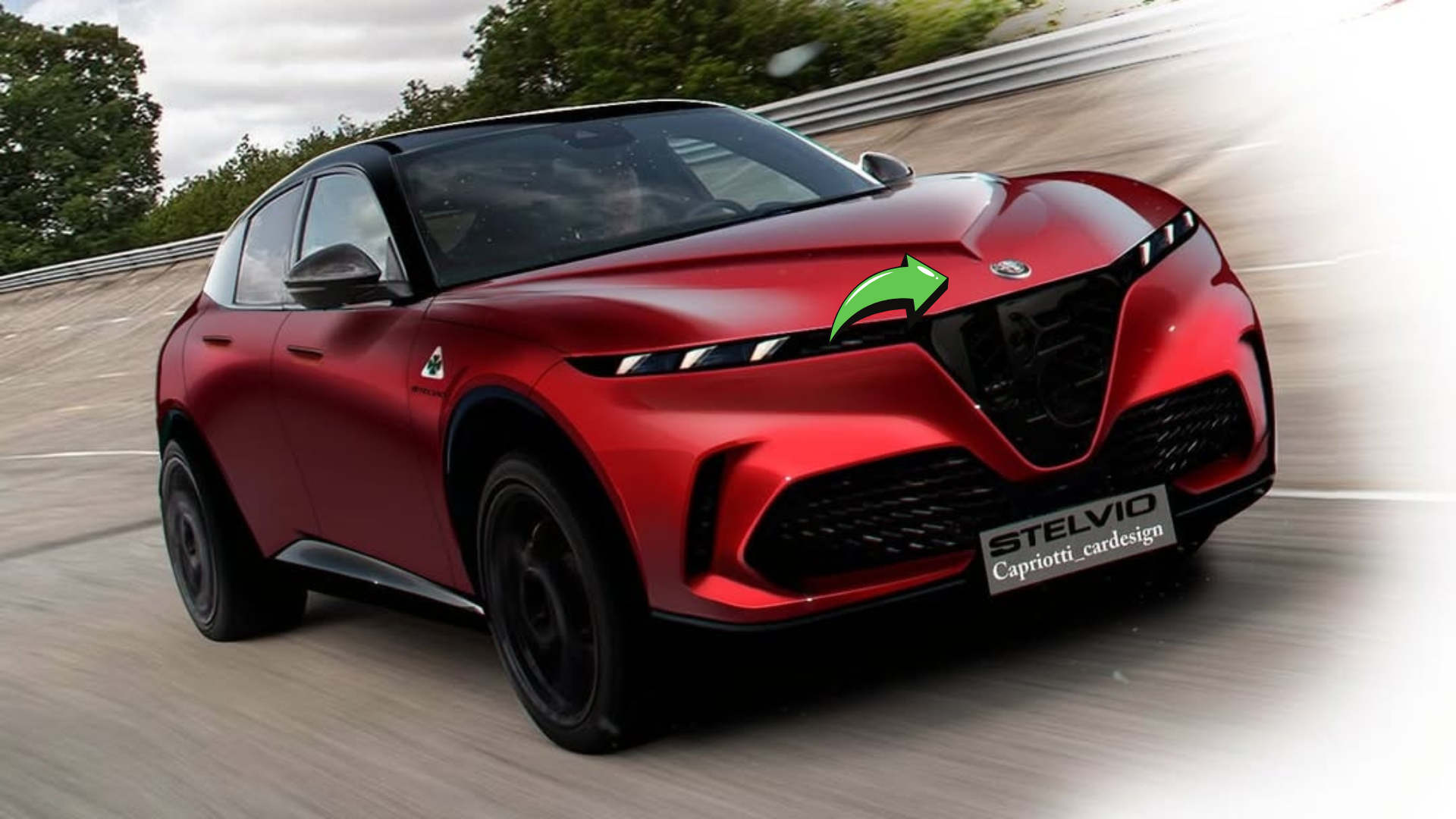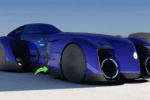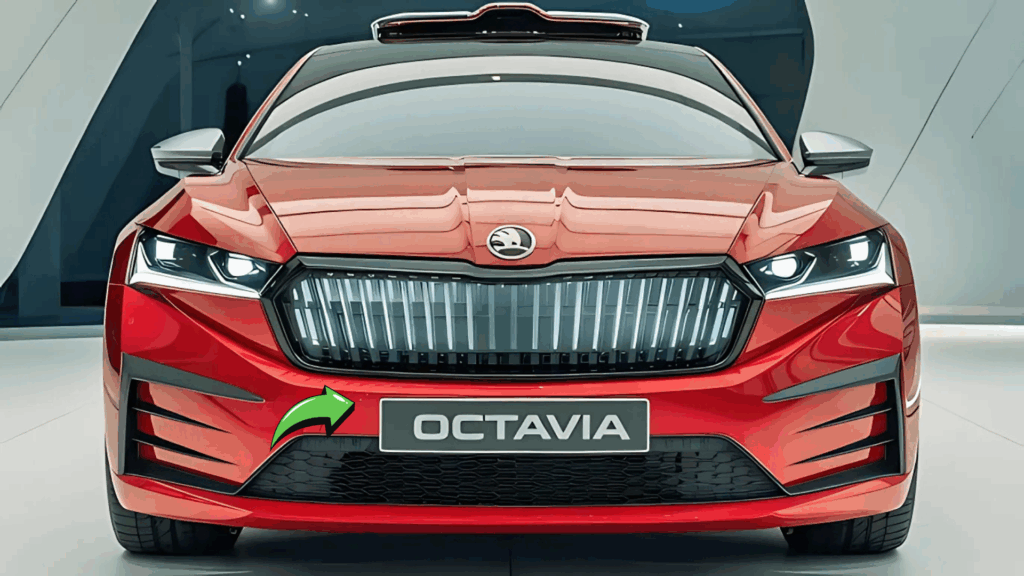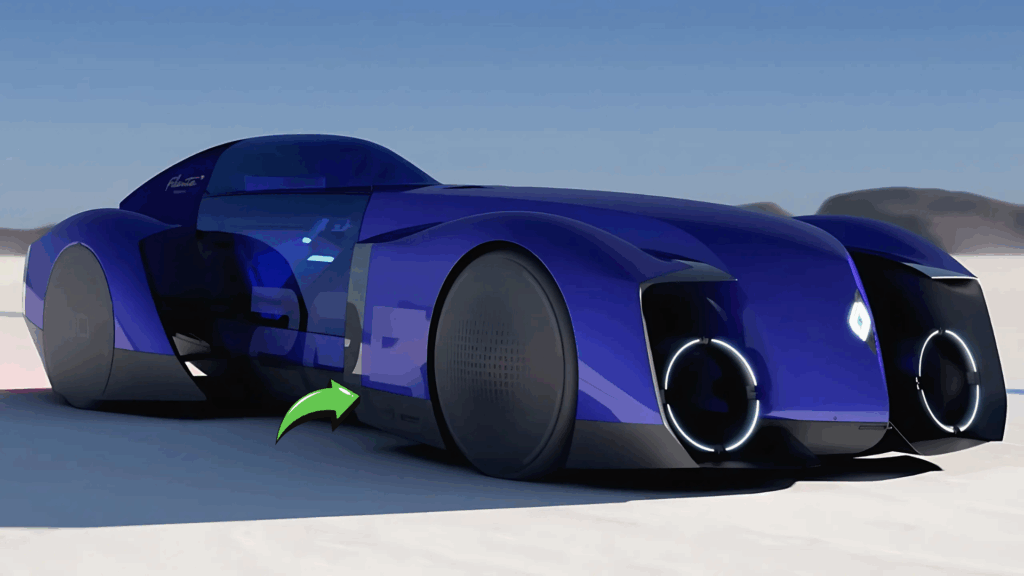Car enthusiasts worldwide woke up to a pleasant surprise yesterday when patent images of the 2026 Alfa Romeo Stelvio leaked online. The images, which appeared first on an Italian automotive forum before spreading across social media platforms, have given us our first legitimate peek at what the storied Italian marque has planned for its flagship SUV’s next generation.
These unexpected patent filings reveal a vehicle that maintains Alfa’s emotional design DNA while pushing boldly into new aesthetic territory. Speaking as someone who’s followed Alfa’s design evolution over three decades, I haven’t seen the company take such a dramatic leap since the 8C Competizione concept debuted at Frankfurt back in 2003.
Table of Contents
Also Read: Omoda C3 Small SUV Unveiled With Bold Sci-Fi and Lambo Cues
A Bold Evolution in Design
The leaked patent images showcase what can only be described as a radical reimagining of the Stelvio’s exterior. Alfa’s designers haven’t simply updated the current model—they’ve fundamentally rethought what a premium Italian SUV should look like in the latter half of this decade.
Most immediately noticeable is the dramatically reshaped front end featuring an evolved interpretation of Alfa’s iconic triangular “scudetto” grille. The traditional shield shape remains but has been stretched horizontally and integrated more seamlessly with the surrounding bodywork, creating a more cohesive visual statement.
Flanking this centerpiece are impossibly thin LED headlights that slice aggressively toward the fenders. These lighting elements create a predatory, focused expression that evokes memories of Alfa’s racing pedigree while incorporating thoroughly modern lighting technology. The signature “3+3” light elements inside the housing provide a distinctive nighttime presence.
The hood surface displays intricate sculpturing with three pronounced character lines flowing organically from the base of the windshield toward the grille. These aren’t merely decorative—patent documentation suggests they serve to channel airflow efficiently while adding dramatic visual tension to the front aspect.
Below the primary grille sits an enlarged lower intake with what appears to be active aerodynamic elements. These likely open and close depending on cooling requirements, improving overall efficiency while maintaining the brand’s commitment to emotional design.
Sleeker Profile with Italian Flair
Viewing the side profile reveals perhaps the most significant departure from the current Stelvio. The roofline features a dramatically more pronounced slope toward the rear quarter, giving the crossover an almost coupe-like silhouette without compromising rear headroom (according to patent documentation notes).
The wheelbase appears marginally extended compared to the current model, perhaps by 15-20mm based on proportional analysis. This subtle stretch likely improves interior packaging while enhancing the vehicle’s stance and road presence.
Wheel arches have been dramatically flared and feature distinctive geometric shaping rather than simple rounded cutouts. This architectural approach to the wheel openings suggests accommodation for wheels up to 22 inches in diameter on higher-spec models, while creating a more muscular visual presence.
The character line running along the doors sits noticeably higher than before, intersecting with the door handles before sweeping dramatically upward toward the rear haunches. This sophisticated surface treatment creates fascinating light-catching surfaces that will surely look spectacular in person, especially in Alfa’s traditional Rosso Competizione paint.
Door handles appear to be fully flush with the body, improving both aerodynamics and visual cleanliness. The patent suggests these employ a touch-sensitive electronic release system rather than mechanical latches, similar to those found on recent Jaguar models but with distinctively Italian execution.
Window surrounds show evidence of either brushed aluminum or carbon fiber trim options, depending on model specification. The greenhouse tapers more aggressively toward the rear, enhancing the sporting character while still preserving adequate visibility for everyday driving scenarios.
Rear Design: Function Meets Emotion
The rear three-quarter view provides perhaps the most dramatic departure from Alfa’s current design language. Gone are the relatively conventional separated taillights, replaced by a full-width light bar with distinctive LED elements that emphasize the vehicle’s width and road presence.
This horizontal light treatment is balanced by vertically oriented secondary lighting elements positioned at the edges of the rear fascia. The overall effect creates a distinctive nighttime signature that will be instantly recognizable from a distance, crucial for brand identity in today’s crowded premium market.
The rear glass appears to have a more aggressive rake than the current model, enhancing the dynamic appearance,e while patent notes suggest maintaining similar cargo capacity through clever packaging of the rear structure. A subtle spoiler integrated into the tailgate’s upper edge likely improves high-speed stability.
Lower rear bumper elements incorporate what appears to be a functional diffuser housing dual exhaust outlets on combustion models. The patent shows different rear bumper configurations depending on powertrain type, with electric variants featuring a cleaner lower treatment without exhaust cutouts.
Quarter panels bulge outward dramatically, creating powerful shoulders that emphasize the rear-drive architecture underneath. This muscular stance has long been an Alfa Romeo hallmark, dating back to iconic models like the 1960s Giulia Sprint GT.
Interior Hints: Technology Forward
While patent images primarily focus on exterior design, cutaway views provide tantalizing glimpses of the cabin architecture. The dashboard appears to embrace a driver-centered cockpit philosophy with a pronounced wraparound effect that cocoons the person behind the wheel.
Instrumentation appears fully digital, with what looks like a curved display panel extending from behind the steering wheel across roughly two-thirds of the dashboard width. Physical controls seem concentrated in the center stack, suggesting Alfa is bucking the industry trend of eliminating tactile interfaces.
The center console features a distinctive rising bridge design reminiscent of Ferrari’s recent interior treatments—no surprise given the shared Italian design heritage. This element houses what appears to be the gear selector and primary drive mode controls, putting essential functions within immediate reach.
Door panels feature sculptural forms rather than flat surfaces, with integrated ambient lighting elements that extend the dashboard’s horizonal theme throughout the cabin. Materials appear to combine traditional luxury elements with technical fabrics, aligning with premium market expectations while maintaining Alfa’s sporting character.
Rear accommodation looks improved over the current model, with patent notes referencing increased legroom and headroom despite the more aggressive roofline. This suggests clever packaging of the floor structure and seat mounting points to maximize interior space.
Storage solutions appear more numerous than in the current model, addressing a common criticism without compromising the cabin’s aesthetic appeal. The overall approach seems to balance luxury expectations with driver-focused sporting intent—a delicate balance that defines premium Italian car design.
Expected Powertrain Options
| Powertrain Type | Estimated Output | Drivetrain | Projected 0-60 mph | Est. Range | Charging Capability |
|---|---|---|---|---|---|
| 2.0L Turbo 4-cylinder | 280-300 hp / 295-315 lb-ft | AWD Standard | 5.8 seconds | N/A | N/A |
| 2.9L Twin-Turbo V6 | 505-520 hp / 465-480 lb-ft | AWD Standard | 3.6 seconds | N/A | N/A |
| Plug-in Hybrid (2.0T + Electric) | 375-400 hp / 420-450 lb-ft | AWD Standard | 4.2 seconds | 30-35 mi (electric) | 11kW AC / 50kW DC |
| Full Electric (Dual Motor) | 400-450 hp / 480-520 lb-ft | AWD Standard | 3.9 seconds | 300+ miles | 22kW AC / 150kW DC |
| Full Electric (Tri-Motor) | 750-800 hp / 850-900 lb-ft | AWD Standard | 2.9 seconds | 280+ miles | 22kW AC / 200kW DC |
Industry sources suggest the combustion engines will utilize a sophisticated 48V mild-hybrid system to improve efficiency while enhancing low-end torque delivery. The V6 option would likely be reserved for a high-performance “Quadrifoglio” variant, continuing Alfa’s tradition of offering exceptional performance at the top of each model range.
The full electric variants would utilize the parent company’s new dedicated EV platform, featuring 800-volt architecture for rapid charging capability. Battery options would likely include both standard and long-range packs, with the tri-motor setup reserved for a flagship performance variant positioned against offerings from Porsche and Tesla.
Several insider reports indicate that all powertrains will feed through a new 9-speed automatic transmission developed specifically for longitudinal applications requiring high-torque handling capability. Manual transmission options appear increasingly unlikely given market trends, though Alfa engineers reportedly fought to retain steering-wheel-mounted shift paddles with uniquely Italian programming logic.
Market Positioning and Competition
The 2026 Stelvio will enter an increasingly crowded premium midsize SUV segment where it must battle established players like the Porsche Macan, BMW X3, Mercedes-Benz GLC, and Audi Q5. The segment has evolved significantly since the current Stelvio debuted, with electrification and increased technology expectations raising the competitive bar substantially.
Alfa Romeo appears to be positioning the new Stelvio as a more emotionally rewarding alternative to its predominantly German competition. While rivals emphasize technical precision and refinement, Alfa continues to prioritize driver engagement and design flair—attributes that appeal to buyers seeking something beyond the mainstream premium offerings.
Pricing strategy will likely reflect this distinctive market position. Industry analysts expect the base model to start around $56,000-$59,000, with high-performance variants potentially reaching $85,000. Electric variants would command a premium over their combustion counterparts, potentially pushing into six-figure territory for the range-topping tri-motor performance model.
The brand’s global sales strategy appears focused on markets where premium crossovers perform strongly and where Alfa’s heritage carries significant weight. North America, China, and Western Europe will likely serve as primary targets, with production volumes calibrated for exclusivity rather than mass-market presence.
Recent leadership changes at parent company Stellantis have reportedly reaffirmed the commitment to Alfa Romeo as a technical showcase brand. The new Stelvio will likely benefit from priority access to the conglomerate’s most advanced technologies, allowing it to compete credibly against rivals from larger manufacturers.
Technical Innovations
Patent images reveal sophisticated aerodynamic development throughout the body. Active grille shutters, air curtains ahead of the front wheels, and carefully managed airflow paths along the vehicle sides suggest extensive wind tunnel optimization for both efficiency and high-speed stability.
Headlight technology appears to utilize next-generation matrix LED systems with over 50,000 individually controllable light elements per unit. This technology enables adaptive light patterns that maximize visibility while preventing glare for oncoming traffic, crucial for markets like Europe, where such systems are increasingly becoming standard equipment.
Sensor placement indicates an advanced driver assistance suite with at least Level 2+ autonomous capability. Discreetly integrated radar emitters, cameras, and ultrasonic sensors suggest functionality including adaptive cruise control with lane centering, automated parking, and emergency evasion assistance without compromising the clean design.
Battery thermal management systems for electrified variants appear particularly sophisticated, with patent documentation referencing a heat pump system for climate control and a liquid cooling circuit that enables both rapid DC charging and optimal battery preservation. The electric architecture would support bi-directional charging capability for vehicle-to-grid applications.
Chassis development reportedly centers around a mixed-material approach, combining high-strength steel, aluminum, and composite elements to optimize the strength-to-weight ratio. Adaptive damping would be standard across the range, with air suspension optional on higher-specification models to balance comfort with handling precision.
Production Timeline and Availability
Automotive industry sources with knowledge of Alfa Romeo’s product roadmap suggest formal production will commence in Q3 2025 at the company’s modernized Cassino assembly plant in central Italy. This facility currently produces the existing Stelvio alongside the Giulia sedan, both of which share Alfa’s Giorgio platform architecture.
The manufacturing plant has reportedly undergone significant upgrades to accommodate both traditional and electrified powertrains on the same production line. This flexible manufacturing approach allows Alfa to adjust production mix based on regional demand variations without compromising build quality.
Initial availability will likely prioritize European markets, with deliveries beginning in November or December 2025. North American market introduction would follow approximately 3-4 months later, with Asian market availability structured around regional auto show schedules to maximize media exposure.
Order books might open as early as June 2025, shortly after the expected formal unveiling at an Italian home market event. Alfa Romeo typically allows early reservations for their most anticipated new models, with priority allocation given to existing Alfa Romeo owners as part of their customer loyalty program.
Production volumes will likely remain relatively modest by industry standards, with annual targets estimated between 75,000-90,000 units globally across all powertrain variants. This controlled volume approach helps maintain exclusivity while ensuring quality control meets increasingly stringent standards.
Heritage and Future Direction
The new Stelvio represents far more than just another product cycle update. It embodies Alfa Romeo’s strategic repositioning within the global premium market—a carefully calibrated balance between honoring their passionate Italian heritage while embracing future mobility trends.
Design elements throughout the vehicle include subtle references to iconic models from Alfa’s 112-year history. The distinctive side window graphic echoes the Giulietta Sprint of the 1950s, while the hood sculpting draws inspiration from the 33 Stradale—widely considered one of the most beautiful automobiles ever created.
This design language will almost certainly influence the broader Alfa Romeo lineup moving forward. The next-generation Giulia sedan will likely adopt similar themes when it debuts approximately 12 months after the Stelvio, followed by a smaller crossover model targeting the rapidly growing compact premium segment dominated by the BMW X1 and Audi Q3.
The careful balance between heritage and innovation appears deliberately calculated to position Alfa Romeo as a forward-looking brand that hasn’t abandoned its emotional core. In an era where automotive differentiation increasingly comes through software rather than hardware, Alfa’s commitment to distinctive design and driving dynamics provides a compelling alternative.
Critical Analysis and Market Impact
The dramatic redesign represents both opportunity and risk for Alfa Romeo. The current Stelvio, while critically acclaimed for its driving dynamics, has struggled to capture significant market share against more established competitors with stronger dealer networks and brand recognition in key markets.
Competitor responses will inevitably follow. BMW’s next X3 generation is reportedly already incorporating more expressive design elements, while Mercedes-Benz continues evolving its “sensual purity” design language to inject more emotion into its SUV lineup. Alfa’s bold direction may accelerate this industry-wide move toward more distinctive vehicle aesthetics.
Sales expectations remain calibrated to Alfa’s position as a niche premium player rather than a volume manufacturer. The brand likely targets modest but meaningful volume growth of 15-20% over current Stelvio levels, focusing on profitability per unit rather than market share acquisition through discounting or fleet sales.
Brand perception stands to benefit significantly if execution matches the ambition evident in these patent images. Alfa Romeo continues working diligently to overcome historical reliability concerns through dramatically improved quality control processes implemented under Stellantis ownership—progress that must continue with this new generation.
The focus on offering multiple powertrain options rather than rushing immediately to all-electric propulsion appears strategically sound given the varying pace of EV infrastructure development across global markets. This pragmatic approach allows Alfa to maintain its presence in markets where EV adoption remains modest while establishing credentials in regions embracing electrification more rapidly.
Enthusiast Response
Early online reaction to the leaked patent images reveals predictably mixed but generally positive sentiment. The Alfisti community—the brand’s notoriously passionate owner base—expresses cautious optimism about the design direction while expressing concern about maintaining the current model’s exceptional driving dynamics.
Performance enthusiasts appear particularly excited about the potential tri-motor electric variant, which would represent the most powerful production Alfa Romeo in the company’s history. The possibility of near-instantaneous torque delivery combined with Italian chassis tuning promises a driving experience distinct from other performance EVs.
Design communities have largely praised the cohesive, purposeful aesthetic that avoids the increasingly busy, over-decorated tendency affecting some competitors. The clean surfacing with precisely placed character lines demonstrates restraint and confidence increasingly rare in modern automotive design.
The potential for electrified powertrains has inevitably sparked spirited debate among traditionalists. Some express concern about the character that might be lost without Alfa’s charismatic engine notes, while others point out that the instant torque delivery of electric motors aligns perfectly with Alfa’s emphasis on immediate vehicle response and driver connection.
Industry analysts note that the design represents a confident statement by a brand that could easily have retreated to cautious territory given its relatively modest sales volumes. This willingness to lead rather than follow suggests surprising corporate support from parent Stellantis, which appears to recognize Alfa Romeo’s potential as a showcase for the conglomerate’s premium aspirations.
Frequently Asked Questions
Q: When will the 2026 Alfa Romeo Stelvio be officially revealed?
A: While Alfa Romeo hasn’t made an official announcement, industry sources expect a formal unveiling in mid-2025, potentially at a dedicated event in Milan prior to a public debut at the Frankfurt Motor Show in September 2025.
Q: Will there still be a high-performance Quadrifoglio version?
A: Yes, the patent images clearly show provisions for performance variants. Expect both traditional combustion Quadrifoglio models with the Ferrari-derived twin-turbo V6 and a new electric Quadrifoglio with tri-motor setup delivering unprecedented performance.
Q: Is the new Stelvio going electric only?
A: No, the patents indicate a multi-powertrain approach. Expect conventional engines with mild-hybrid technology, plug-in hybrid options, and full electric variants to suit different market needs and customer preferences throughout the vehicle’s lifecycle.
Q: How much bigger is the new model compared to the current Stelvio?
A: Patent documentation suggests modest dimensional growth, with approximately 1.2 inches (30mm) additional length and 0.8 inches (20mm) additional width. Height appears virtually unchanged, while wheelbase extends by about 0.6 inches (15mm) for improved interior packaging.
Q: Will the new Stelvio continue to be built in Italy?
A: Yes, production will remain at Alfa’s Cassino plant in central Italy, which has received significant investment to modernize manufacturing processes and accommodate both traditional and electrified powertrain production on the same assembly line.
Q: Does this design preview other upcoming Alfa Romeo models?
A: Almost certainly. The design language displayed in these patent images will likely influence the next-generation Giulia sedan expected in 2027, as well as a smaller crossover model rumored to revive the historic “Milano” nameplate in late 2026.











